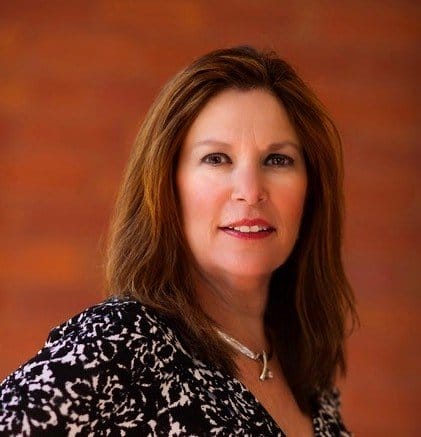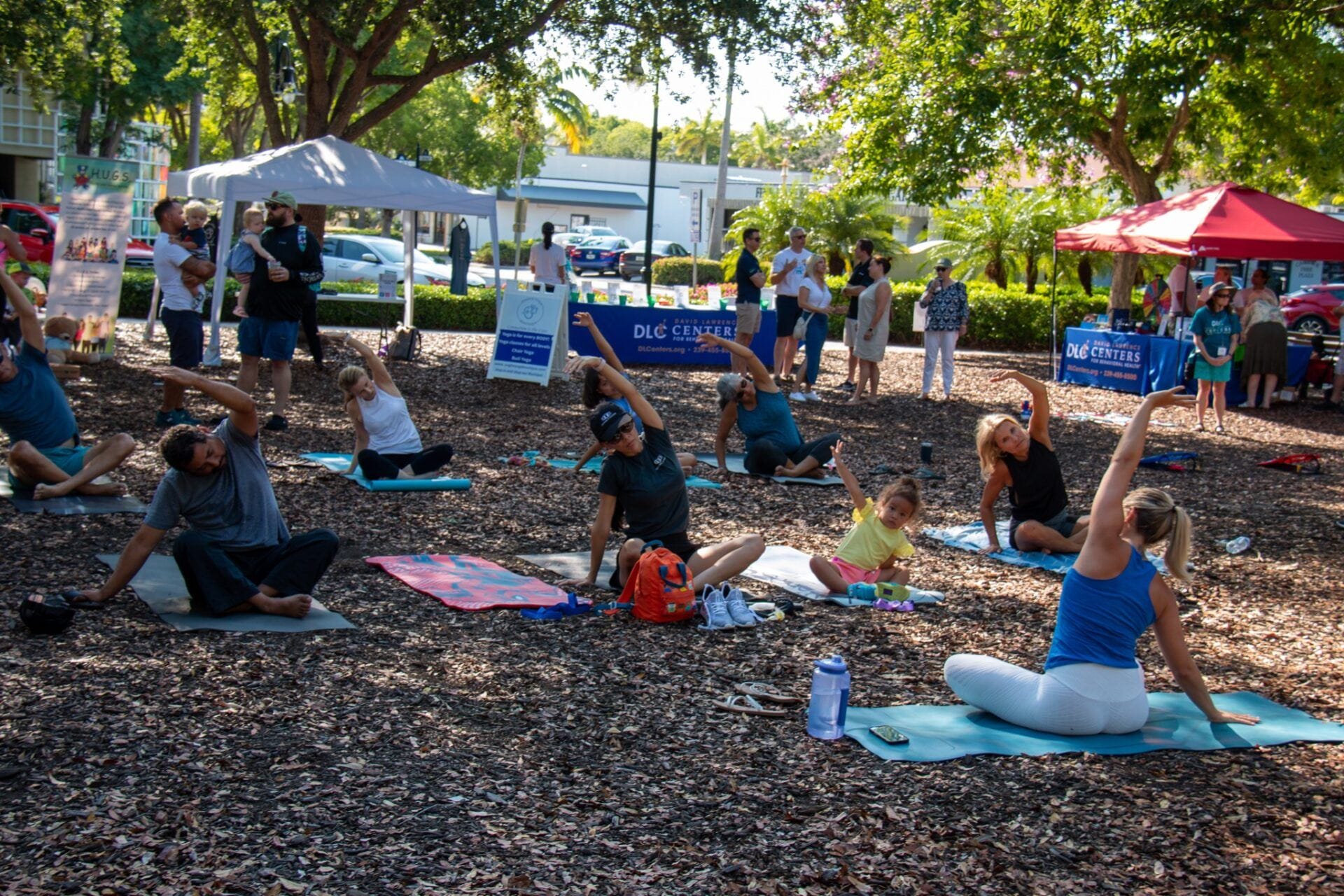
Nurturing our First and Lifelong “Team”: A Model for Building Healthy Family Dynamics
by DLC Community Partner Lisa Gruenloh, MPAP, CPC, Founder and President of Purpose Journey®
When I was a teenager, I sometimes would joke that our family put the “fun” in dysfunctional. I’d always get a good chuckle out of people, likely because they could relate. Family quirks and personalities can be endearing. However, most of us have lived with family dynamics that could be improved. Experiences and patterns of unhealthy conflict, lack of trust or acceptance, misunderstandings, miscommunications, and many other challenges are universally common.
Even when we genuinely love each other, we don’t always have the skills necessary to live and work together in the most productive manner. The inability to respect differences, resolve disagreements, or forgive hurts (to name just a few common issues) can cause pain and distress, sometimes leading to regrets or bitterness that take a devastating toll on our mental, emotional, and physical health.
An effective framework for building a healthy and cohesive family “team”
Ideally, our family – whether our family of origin or chosen family – serves as one of our most stable support systems, our safe harbor. Just like a workplace team, that kind of dynamic doesn’t happen by accident. It’s deliberately cultivated through how we consistently interact with one another. So how can we learn and practice behaviors that foster love and cooperation, build trust, and cultivate authentic harmony?
Because our family represents our first “team” experience, looking to best practices of healthy workplaces can provide helpful, adaptable guidance. One of the most effective frameworks I’ve utilized in my work during the last 15 years is Patrick Lencioni’s Five Behaviors of a Cohesive Team®. The model is based on Lencioni’s New York Times best-selling book The Five Dysfunctions of a Team, which has become an essential resource for leaders, managers, and team members at all levels in organizations – across sectors and industries, across the globe.
Here are some ideas and tips to create a high-functioning family inspired by The Five Behaviors® model:
Behavior #1: Trust One Another
Trust is the foundation not only for teams, but in one-on-one relationships. A traditional view of trust is one dependent upon another person being consistently reliable. A teenager might earn a parent’s trust by consistently completing homework without supervision or coming home by a set curfew, for instance.
That’s important, but Lencioni stresses a different and deeper form: vulnerability-based trust. As the name suggests, this type of trust is achieved when individuals are encouraged to be vulnerable with one another, without judgment or retribution.
How does this look in practice? Family members can share concerns and feelings, admit weaknesses, own up to mistakes, and ask for help – all without fear of how that information or action might be used against them. Vulnerability-based trust also allows each individual to be exactly who they are and know that they will be loved and accepted, no matter what. This is the ultimate safe harbor.
A special note of caution for families: be mindful of the ways in which we tend to label and pigeon-hole the people closest to us. This often is done playfully and might seem harmless. We might jokingly call someone clumsy because they had they one awful and embarrassing tripping incident that has become one of those dreaded family stories told over and over. Or perhaps a family member got into some serious trouble at one time and is now the “rebel”.
Everyone needs space to not only be themselves, but to change and grow…and not be reduced to a single or few unfortunate moments or circumstances. If you or someone in your family claims “that person will never change,” pause. Consider if you are allowing and encouraging them to. Seeing a person’s potential for change, growth, and success is another important way to build authentic trust and honor individuality. Your journey will not be successful without this approach.
Behavior #2: Engage in Conflict around Ideas
Of the five “dysfunctions”, unhealthy conflict might be the most obvious in family dynamics. It’s clearly visible during arguments and disagreements that leave people feeling hurt, defeated, or at an impasse. Unhealthy conflict is strongly felt even in its passive forms: conflict avoidance appearing as the cold shoulder treatment or denial that anything is wrong, when there are real problems that need attention.
There’s a better way, and it relies heavily on vulnerability-based trust: open and honest exploration of differences. You can keep difficult discussions productive by focusing on ideas, rather than people or personalities. These conversations could still be quite lively – and they likely will be if everyone is truly being honest – but they can be respectful, even enlightening. This kind of healthy conflict actually leads to better and more innovative options and decisions because the ideas generated include a wider range of perspectives, knowledge, and experience.
Encourage each person to share their opinions, what they are upset about, and how they feel. Since we all have different personalities and comfort levels around expressing ourselves, be sure that more reserved family members speak up. Often family conflicts fester because some members are not being or feeling heard and that can, almost inevitably, lead to resentment. Being aware of your own conflict style and unproductive habits is also important. Family roles often extend beyond mother, father, daughter, son. We’ve all seen examples of pleasers, martyrs, bullies, judgers, and many other kinds of characters.
Don’t allow negative emotions and unproductive behaviors to overpower your desire for a loving home environment and don’t settle for the kind of artificial harmony bred from avoidance. It might be challenging to step out of your comfort zone at first, but it’s well worth the effort.
Behavior #3: Commit to Decisions and Actions
Just because you start engaging in healthy conflict doesn’t mean conflict goes away. Conflict is a natural part of life, and we master it by embracing it with good intent and skillful practice. If there’s a strong foundation of trust, family members will feel more open than ever to share their views and opinions. Get ready for a lot of ideas for the next family vacation. It’s fun to let the creativity flow!
But what happens when it comes to decision time? Lencioni says two primary things get in the way of team members committing to a decision or action plan – the need for consensus and the need for certainty. Consensus? If everyone is honestly and openly sharing opinions, it’s unlikely there will be 100% consensus. Certainty? As much as we want it, it simply doesn’t exist – in anything, really.
Acknowledging that absolute consensus and certainty are not realistic, we instead can focus on two things that can achieve commitment: clarity and buy-in, Lencioni advises. If each person feels their voice is genuinely heard, understood, and considered, it’s much easier to gain commitment to a decision. In young families, the parents are the ultimate decision-makers, but having all family members feel good about the plan – even if it wasn’t their idea – makes life more enjoyable for everyone. Explaining the reasons behind the decision also helps with buy-in. (Generally, “because I said so” doesn’t go over well!)
And, finally, you can reduce anxiety around uncertainly by ensuring clarity on how the decision will be implemented and what each person’s role will be. Clear expectations build confidence and help everyone contribute to the family’s success, maybe even with fewer bouts of resistance and complaints.
Behavior #4: Hold One Another Accountable
With a group commitment and clear expectations in place, everything should go smoothly now, right? Well, not always. People don’t always follow through with their commitments for any number of reasons. Letting these things slide might feel like the easy thing to do. It might even seem “nice” for the person not doing what they said they would do. But before you decide how to handle it, be sure you are not avoiding conflict to sidestep your own discomfort.
Everyone deserves some flexibility and grace, for sure. But when missed commitments and broken promises become routine, it is in that person’s and the family’s best interests to provide feedback and nudge them in the right direction. It’s the difference between being “nice” and being “kind”. When we have the courage to give people feedback about how their action – or inaction – is impacting us or others, it demonstrates both care for the group and care for the individual, setting an expectation for clear and healthy boundaries.
In the end, the teachers, bosses, friends, and loved ones who hold us accountable are so often the ones we respect the most. They cared enough to say the uncomfortable things that we needed to hear to help us be our best. As teams and families practice compassionate accountability consistently, individuals get better at holding themselves accountable, yet another way of building trust, managing conflict, and overcoming dysfunction.
Behavior #5: Focus on Achieving Collective Results
Families often are focused on supporting individual goals and achievement, and that’s wonderful. Remember, our family can be our strongest support system. Yet taking a page from The Five Behaviors® playbook, we see that working toward goals, working through failures, and celebrating successes as a team can raise the bar on everyone’s success and fulfillment.
Especially for children, it’s important to set a tone that asking for and benefitting from the support and encouragement of others is key to not only success, but to maintaining meaningful and fulfilling relationships. The same is true for failures. What a relief to know that we can mess up or underperform against our goals or expectations and we’ve got a whole group of people sharing the experience and helping us move beyond and grow from it.
The notion of collective results is also helpful in the context of resource, time, and energy budgeting. Most families are working with a finite pool of resources and can be faced with making difficult decisions about which individual’s interests to support and to what extent. Activities such as sports, clubs, trips, and so on, can be quite costly, as an example. As challenging as it is, family members sometimes have to make sacrifices for one another or for the greater good. When there is a strong sense of team and everyone is embracing The Five Behaviors®, these situations, while never easy, can have less negative and lasting impacts on family dynamics.
Perhaps the greatest goal a family can have is a collective commitment to both personal and group development. Nurturing a strong, supportive family “team” fosters a sense of security, love, and pride that the entire family will benefit from.
Putting The Five Behaviors® into Action
A fundamental element of mental, emotional, and physical health is strong social and family connections. Your investment in cultivating a high-functioning family “team” (with this model or another that resonates with you) will have tremendous short- and long-term positive impacts.
If you feel inspired to approach family members about learning and practicing new ways of interacting, start a conversation by sharing this article or another helpful resource. Model vulnerability-based trust by sharing some ways you hope to improve relationships in your family. Invite them to share their thoughts about what they believe is working well in the family and what could be improved.
Just as with workplace teams, develop a shared vision together and start taking one step at a time, practicing new and uplifting ways of interacting. Remember that the Five Behaviors of a Cohesive Team® build on one another, with vulnerability-based trust providing the foundation for the model and forging to the top of the pyramid. Developing competence or improvement in one behavior gives groups the necessary skills and mindset to improve and excel with the next behavior. Stay encouraged and celebrate progress on your journey. You can be a powerful change agent in your family.
And, for the record, while I still believe in having some light-heartedness around our personality and family quirks, over the years I’ve become deeply committed to putting the fun in functional relationships, teams, and organizations!
Lisa Gruenloh is an International Coaching Federation (ICF)-certified executive and emotional intelligence coach. She’s Founder and President of Purpose Journey®, a consulting, training and coaching company that helps individuals and organizations harness their unique values, strengths, and purpose with bold action to optimize their well-being and impact. In addition, Lisa is a certified practitioner and authorized partner of Five Behaviors of a Cohesive Team® and other leadership and team assessments and tools. Learn more at www.purposejourney.com and www.purposejournal.com.
Dec 01, 2022 | Blog, Mental Health



